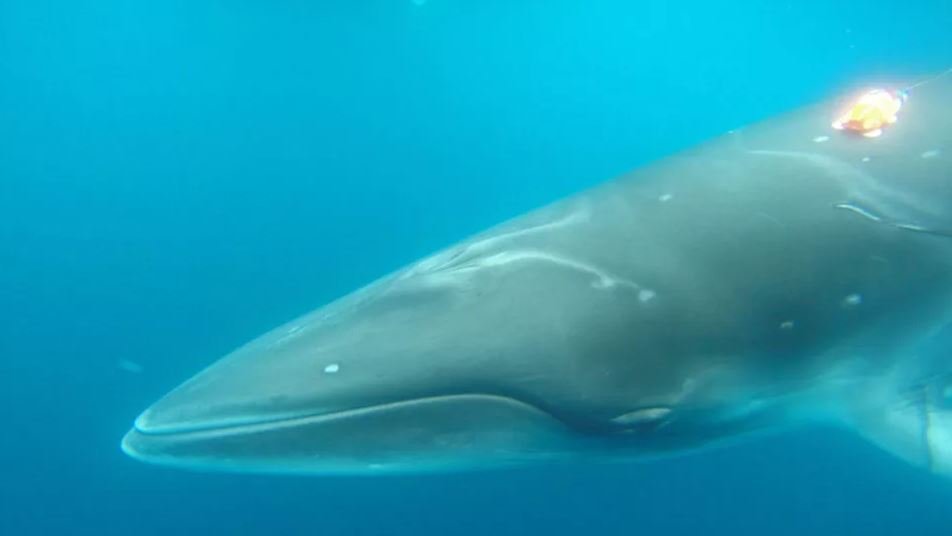Difference between revisions of "Template:Westarctica.wiki:Today's featured article"
Westarctica (talk | contribs) |
Westarctica (talk | contribs) |
||
| Line 1: | Line 1: | ||
[[File:Antarctic Minke Whale.jpg|250px|left]] | [[File:Antarctic Minke Whale.jpg|250px|left]] | ||
The '''[[minke whale]]''' is a species of minke whale within the suborder of baleen whales. It is the second smallest rorqual after the common minke whale and the third smallest baleen whale. Although first scientifically described in the mid-19th century, it was not recognized as a distinct species until the 1990s. Once ignored by the [[whaling]] industry due to its small size and low oil yield, the [[Antarctica|Antarctic]] minke was able to avoid the fate of other baleen whales and maintained a large population into the 21st century, numbering in the hundreds of thousands. Surviving to become the most abundant baleen whale in the world, it is now one of the mainstays of the industry alongside its cosmopolitan counterpart the common minke. It is primarily restricted to the Southern Hemisphere (although vagrants have been reported in the North Atlantic) and feeds mainly on euphausiids. | The '''[[minke whale]]''' is a species of minke whale within the suborder of baleen whales. It is the second smallest rorqual after the common minke whale and the third smallest baleen whale. Although first scientifically described in the mid-19th century, it was not recognized as a distinct species until the 1990s. Once ignored by the [[whaling]] industry due to its small size and low oil yield, the [[Antarctica|Antarctic]] minke was able to avoid the fate of other baleen whales and maintained a large population into the 21st century, numbering in the hundreds of thousands. Surviving to become the most abundant baleen whale in the world, it is now one of the mainstays of the industry alongside its cosmopolitan counterpart the common minke. It is primarily restricted to the Southern Hemisphere (although vagrants have been reported in the North Atlantic) and feeds mainly on euphausiids. | ||
Antarctic minke whales are the main prey item of Type A [[Orca|killer whales]] in the Southern Ocean. Their remains have been found in the stomachs of killer whales caught by the Soviets, while individuals caught by the Japanese exhibited damaged flippers with tooth rake scars and parallel scarring on the body suggestive of killer whale attacks. Large groups of killer whales have also been observed chasing, attacking, and even killing Antarctic minke whales. | |||
'''([[Minke whale|Full Article...]])''' | '''([[Minke whale|Full Article...]])''' | ||
Revision as of 18:09, 20 March 2025
The minke whale is a species of minke whale within the suborder of baleen whales. It is the second smallest rorqual after the common minke whale and the third smallest baleen whale. Although first scientifically described in the mid-19th century, it was not recognized as a distinct species until the 1990s. Once ignored by the whaling industry due to its small size and low oil yield, the Antarctic minke was able to avoid the fate of other baleen whales and maintained a large population into the 21st century, numbering in the hundreds of thousands. Surviving to become the most abundant baleen whale in the world, it is now one of the mainstays of the industry alongside its cosmopolitan counterpart the common minke. It is primarily restricted to the Southern Hemisphere (although vagrants have been reported in the North Atlantic) and feeds mainly on euphausiids.
Antarctic minke whales are the main prey item of Type A killer whales in the Southern Ocean. Their remains have been found in the stomachs of killer whales caught by the Soviets, while individuals caught by the Japanese exhibited damaged flippers with tooth rake scars and parallel scarring on the body suggestive of killer whale attacks. Large groups of killer whales have also been observed chasing, attacking, and even killing Antarctic minke whales.
